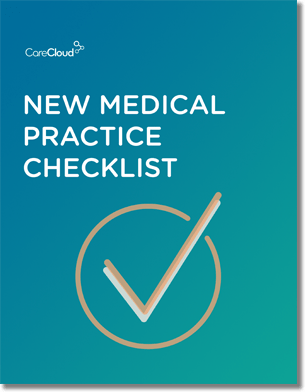Many healthcare professionals accustomed to paper-based clinical workflows are finding the shift to digital medical records challenging, feeling it’s little more than an inconvenient requirement – a mandated change with few benefits beyond the government’s incentives.
Yet doctor groups that have adopted quality systems with advanced clinical analytics capabilities are seeing major benefits and conferring them on patients through better, more consistent medical care and treatment.
Variances are Common – For the Wrong Reasons
Studies have long shown that, traditionally, the amount of medical care consumed in a given community varies widely depending on a wealth of factors. Even if the patient demographics of a community are the same as those of a similar town one state over, the two localities may have vastly different metrics related to the number of encounters conducted, procedures performed, or medications prescribed.
That’s because individual doctors are making their own respective decisions about what actions to take in a given situation, operating on information sets unique to their own standards and expectations as physicians.
Additionally, some trends have been known to emerge related specifically to geography – and the resulting supply and demand.
Research from John E. “Jack” Wennberg, MD, MPH, founder of the Center for Evaluative Clinical Services and professor of Community and Family Medicine at Dartmouth University, found that the number of providers in an area can have an impact on the amount of medical services consumed.
The amount of doctors also may influence the “tipping point” at which procedures are rendered to patients. Eye specialist Dr. Frank Read told the following to radio program This American Life in 2009:
“My old partner… was asked by a friend of his, you know, ‘At what level of vision do you do a cataract operation?’ And he said, well, if there’s one ophthalmologist in town, it’s 2200. If there are two ophthalmologists in town, it’s 20/80. If there are three ophthalmologists in town, it’s 20/40.
2200 is pretty terrible vision. 20/40 isn’t all that bad.
Dr. Read’s colleague was no doubt exaggerating, but his comments illuminate one of many advantages to using an electronic health record with data analysis capabilities – features any system worth its cost should have.
Data Analysis that Leads to Standardized Care
Large doctor groups are finding that analyzing provider data throughout their organizations is allowing the different standards of care from physician to physician to be elucidated.
Armed with data, those organizations can share findings with their providers, explain any troubling variances in care delivery, and have the doctors in their groups decide on ordered, standardized courses of treatment and care.
That, in turn, helps patients throughout those doctor groups receive the same course of care no matter which doctor in an organization they see.
In groups that span multiple counties and states, this means that the amount of providers in a given city has less impact on when a procedure is rendered since the expectations for care are uniform across the network.
As more doctors adopt interoperable EHR systems with data aggregation and analysis capabilities, and health information exchange networks expand, we’re getting closer and closer to a healthcare environment in which clinical decisions are based on a standard set of expectations – and patients receive the necessary care at the necessary time, no matter their geographic locations.
Better, more uniform patient care? That’s a benefit no paper record can offer.
Has your organization engaged in data analysis to standardize care delivery? How has it impacted your processes?

Do you know what you need when setting up a new medical practice?



